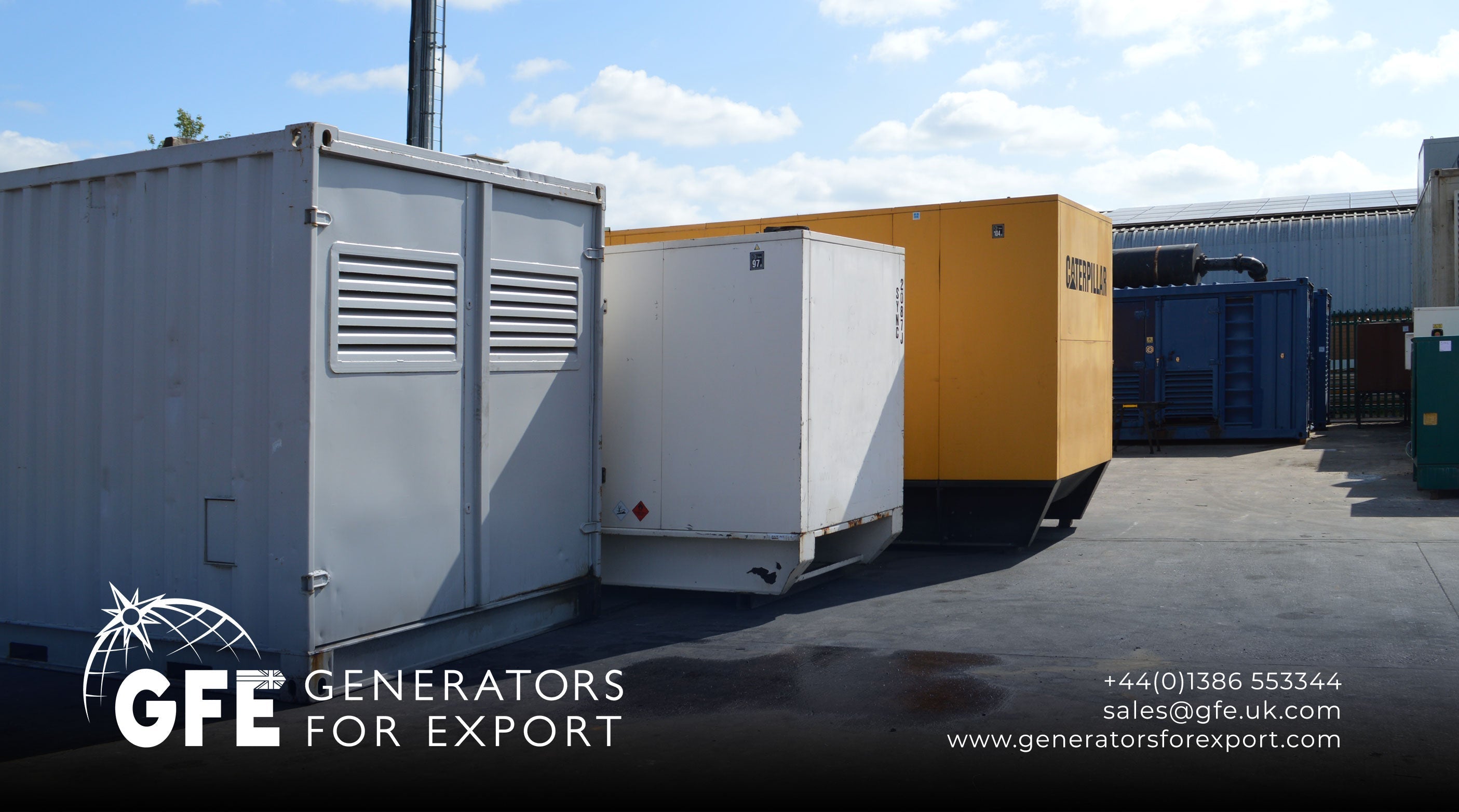A Practical Guide from Generators For Export
Choosing the right generator size isn’t just a technical task, it’s the key to reliable, efficient power. Whether you’re powering a construction site, a commercial facility, or using a generator for backup during outages, the size and capacity of your unit directly affect performance, safety, and cost.
At Generators For Export, we specialise in supplying high-quality, used diesel generators to customers across the UK and overseas. And when it comes to generator sizing, we know that getting it right the first time can save you a lot of time, money, and stress later on.
In this guide, we’ll walk you through what to consider when choosing a generator and how to make an informed decision, without overcomplicating things.
Why Generator Size Matters
When people think about buying a used generator, they often ask what brand is best? or how many hours has it run? But one of the first questions should always be: What size generator do I actually need?
Choosing a unit that's too small can lead to power shortages, overloaded circuits, and possible equipment damage. Too large, and you’re overspending on fuel, space, and purchase costs, especially if the unit never reaches its optimal load.
That’s why it’s crucial to choose a generator that fits your actual power requirements. Not just for today, but with a little room for tomorrow too.
What Does "Generator Size" Really Mean?
When we talk about size, we’re referring to the output capacity, typically measured in kVA (kilovolt-amperes). This figure tells you how much power the generator can supply.
But don’t worry, you don’t need to do the maths yourself.
We’ve created a simple, free-to-use kVA calculator to help you determine the right capacity for your needs. Just input the phase, amps and voltage, and the calculator will give you a recommended generator size. The calculator is a guide only, always speak to one of our engineers about your specific requirements before buying a generator.
How to Approach Generator Sizing
1. Think About Your Power Use
Start by listing what the generator will need to power. Are you running lights, computers, and office equipment, or heavy machinery, pumps, and compressors? Will everything run at once, or will some systems cycle on and off?
If you're planning for backup power, think about what’s essential to keep running during an outage. For prime power, you’ll need a generator that handles constant, all-day use.
Not sure? We’re happy to walk through it with you.
2. Plan for Growth
It’s easy to focus only on your current needs, but it’s smart to plan ahead. Are you likely to expand your operations, add new equipment, or move to a larger site? Sizing slightly above your immediate requirements ensures you’re not maxing out the generator every time it starts.
We often recommend allowing a bit of extra capacity to avoid pushing the generator too close to its limit.
3. Consider the Application
Different industries and settings demand different approaches to sizing:
- Construction Sites: Tools, lighting towers, site cabins, and machinery all draw varying loads. We regularly supply 100kVA-300kVA generators to construction clients for this reason.
- Data Centres & IT Facilities: Sensitive electronics require stable, consistent power. Size conservatively and include UPS compatibility.
- Events & Hospitality: If you're supplying power to audio/visual setups, kitchens, and lighting, you’ll need a balance of power and portability.
- Export Customers: For clients overseas, especially in regions with unreliable grid infrastructure, we recommend containerised or bunded tank options for longer runtimes.
Take a look at our industry-specific generator solutions to see examples of where our used stock is making a difference.
4. Know the Difference: Standby vs Prime Power
- Standby Generators are designed for emergency use. They’ll kick in when the mains go out but aren’t built for continuous operation.
- Prime Generators are made to run for extended hours, even full-time, making them ideal for remote sites and off-grid applications.
We’ll help you find the right solution depending on how often, and how long, you need your generator to run. Learn more in our article on prime and standby generators.
Get the Right Phase & Voltage: another key factor is whether you need a single-phase or three-phase generator:
- Single-phase (220-240V) is standard for homes and light commercial use.
- Three-phase (380-415V) is better for industrial machinery and large facilities.
We stock a wide range of single-phase and three-phase used generators ready for immediate delivery.
Still Not Sure What You Need?
We get it, choosing the right generator isn’t something most people do every day. That’s why our team is here to help.
We don’t just sell generators, we offer:
- Expert advice based on years of real-world experience
- Load assessment and generator matching
- Flexible options for export or UK use
- A curated stock of trusted brands like Cummins, Perkins, Volvo and more
- Generator decommissioning if you’re replacing an old unit
Contact the Experts
At Generators For Export, we’ve supplied everything from compact 20kVA units for farms and small businesses to 2,000kVA generators for large-scale operations and international buyers.
If you’re ready to find the perfect fit for your project, we’re here to guide you every step of the way.
Call: +44(0)1386 553344 | Email: sales@gfe.uk.com
Or contact us online and tell us what you need, no jargon, no pressure.
Need help right now?
Use our free kVA calculator to get started instantly.

